Florida’s “no-fault” insurance laws provide certain protections, but in the process, they create a lot of confusion. Even worse, the no-fault system can limit your ability to seek compensation after a car accident. To fully understand how Florida’s no-fault insurance system affects an accident claim, it is necessary to look at what the rules require, how they work in practice, and the exceptions they provide for certain types of accident claims.
As a legal team with extensive experience helping accident victims recover the compensation they deserve after suffering injuries in auto collisions, truck accidents, slip and fall incidents, animal attacks, and other accident situations, the team at Searcy Denney has considerable first-hand experience in dealing with Florida’s no-fault insurance rules and helping clients overcome the limitations so that they can receive the maximum available damage award. So, let’s take a look at the effects that Florida’s no-fault insurance rules can have on a car accident claim.
What is “No-Fault” Insurance?
The insurance that is commonly referred to as “no-fault” insurance in Florida is technically known as Personal Injury Protection (PIP) insurance. It covers a certain amount of “necessary and reasonable” medical expenses for the driver and anyone in the vehicle who has been injured in an accident, regardless of who caused it. Florida law requires drivers to carry at least $10,000 in PIP coverage.
In theory, this creates a no-fault system where injured drivers and passengers can quickly get the medical care they need without worrying about establishing legal liability and filing a lawsuit because everyone goes to their own insurance company first to file a claim. In reality, however, insurance companies still deny claims, and it is often necessary to file a lawsuit to ensure that accident victims receive the medical care they need.
Just because the insurance scheme is referred to as “no-fault” does not mean that no one can be held accountable for the accident. In every accident, the cause can generally be traced to the negligent or reckless actions of one or more people. Those who are found to be responsible for causing an accident can still be held legally liable even in Florida’s no-fault system, but it is necessary to satisfy some requirements first.
What Does Personal Injury Protection Insurance Cover?
Each PIP policy can vary in coverage, so it is necessary to examine the fine print of a policy to know precisely what is covered and what is not. In general, PIP coverage in Florida will pay 80% of medical costs up to a maximum of $10,000. This could include:
- Medical exams
- Surgery
- Hospital expenses
- Diagnostic tests
- Prescription medication
- Ambulance services
- Rehabilitation expenses
However, the services must be considered “necessary” by the insurance company, and coverage amounts may be much lower if the accident does not result in the need for emergency treatment.
You can add coverage for other residents of your household, and you can add coverage that would pay up to 60% of wages lost due to time missed from work due to the accident.
PIP insurance will not cover any intangible losses, such as pain and suffering. Moreover, the $10,000 limit in Florida PIP coverage often does not even come close to covering the cost of losses in an accident.
Recovery is Often a Two-Stage Process
Florida’s no-fault auto insurance scheme can potentially enable accident victims to receive some medical care and compensation for lost wages without the need to wait for a determination of liability. But the $10,000 limit on coverage means that for a severe accident with serious injuries like traumatic brain injuries, the driver’s PIP coverage is going to be woefully inadequate to meet medical needs. This means that recovery after an accident becomes a two-stage process.
First, the accident victim must satisfy requirements from their own insurance company to receive payments to cover medical expenses and lost wages up to the $10,000 limit. If the driver has Medical Payments coverage, that could cover some additional medical expenses. However, insurance companies can be reluctant to pay claims, so it can take a considerable fight to get basic coverage amounts.
Then, for the next part of the process, an accident victim needs to meet the requirements to seek compensation directly from the person or people responsible for the accident. This is a complex task, and it can be nearly impossible while you are recovering from a devastating injury. However, when you work with an experienced legal team, your legal advocates can work on the case while you focus on rebuilding your life and health.
When Can You Recover from Others Responsible for the Accident?
The no-fault insurance rules prohibit you from suing the driver who was responsible for causing the accident unless you meet certain requirements. This is referred to in the statutes as a “tort exemption.” In other jurisdictions, accident victims routinely seek compensation from at-fault drivers or third parties whose negligence led to an accident, and usually, the responsible drivers’ insurance companies respond to the claim and eventually pay damages. However, in Florida, the accident must have been serious enough to allow for a lawsuit. The good news is that when a lawsuit is allowed, the accident victim may be entitled to compensation to cover not only medical needs and lost wages but also other consequences such as pain, suffering, and inconvenience.
The Serious Injury Threshold
The standard to be permitted to file a lawsuit for full damages after a car accident in Florida is often referred to as the “serious injury threshold.” It’s described in Section 627.737 of the Florida statutes, but to truly understand how the rules apply, you also need to be familiar with how judges have interpreted the standard in legal cases over the years.
The statute specifies that if you have been injured in an auto accident, you can file a lawsuit and seek damages from the person responsible if your injuries from the accident:
- Result in “significant and permanent loss of an important bodily function”
- Are permanent “within a reasonable degree of medical probability”
- Result in “significant and permanent scarring or disfigurement”
- Cause death
While in some cases, it will be obvious that injuries from an accident meet the threshold and allow you to pursue a legal claim, in many situations, it takes significant evidence to prove that your injuries qualify. This is one reason it is important to work with an attorney who is skilled and experienced in helping accident victims recover the full damages they deserve after a car accident.
Each Person’s Condition Must Be Taken into Consideration
When determining whether injuries meet the standard in the statute, your attorney should be prepared to show the unique factors in your situation that cause the injuries to have a serious and permanent impact on your life. For instance, an injury such as whiplash might heal without lasting effects for a young individual with no prior injuries or physical limitations. But if you suffer whiplash at a more advanced age or when you are already suffering from neck or back impairments, the damage to your soft tissue could lead to permanent pain and disability. Or a bone fracture might heal after surgery in the case of one individual but leave someone else with constant pain and limited mobility.
It often requires considerable effort to gather and present evidence to show why an injury is so serious in your particular situation, but it can make the difference between recovering the full compensation you are owed versus being denied the opportunity to pursue your case in court at all. Make sure you choose an attorney who knows how to overcome the threshold challenges and who is dedicated to your success.
Evidence to Succeed in Recovering Damages
To recover damages in a car accident lawsuit under Florida laws, you need to gather, preserve, and present large amounts of evidence. You need evidence to demonstrate that the other driver was at fault for causing the accident to show why they should be held liable. You also need evidence to show that your injuries meet the serious injury threshold.
An experienced attorney will know how to collect and preserve evidence, so it is wise to consult an accident attorney as soon as possible after the accident. Evidence to prove liability and the severity of your injuries might include:
- Footage from traffic cameras and security cameras
- Photos of the accident scene showing skid marks and broken glass
- Photos showing the damage to vehicles involved
- Testimony from witnesses regarding the accident and the impact of the injuries on your life
- Medical records
- Testimony from experts in accident reconstruction and medical impairment
Some evidence will only be available right after the accident, so it is wise to begin the process of gathering evidence as soon as possible after the collision. It is a good idea to record your memories of the accident right away because memory becomes less reliable as time passes. It is also helpful to record the impact the accident has had on your daily life by keeping a diary that shows how pain and injuries prevent you from enjoying life and participating in activities the same way you did before the accident.
Damages You May Be Able to Recover
If you meet the serious injury threshold, you can seek a full range of damages that include both economic losses and noneconomic losses, as well as punitive damages in certain situations. Economic losses are factors that can be calculated monetarily, such as medical bills and wages lost due to time missed from work. They can also include amounts projected to meet future medical needs or account for future reduced earning capacity.
Noneconomic damages account for the factors that have a tremendous impact on your life but don’t have a direct monetary equivalent. They include factors such as:
- Pain
- Suffering
- Mental anguish
- Inconvenience
- Loss of enjoyment of life
In lawsuits and settlements, the amounts allocated for noneconomic losses are often much higher than the amount calculated for economic losses. After all, the time you lose due to an injury is priceless. Someone who is in pain or suffers a permanent limitation that prevents them from living life to the fullest would likely trade any amount of money to have back the comfort and abilities they have lost. Because the amounts awarded for noneconomic damages are often so significant, the focus of the limitation on tort liability in the Florida no-fault scheme is on noneconomic damages.
It is necessary to satisfy the serious injury threshold to be able to seek noneconomic damages in a lawsuit. However, if you have economic losses that exceed the amount of your PIP coverage, you may be able to seek compensation for those additional economic losses even if you are not able to satisfy the legal requirements of the serious injury threshold.
In situations where it is possible to show that the at-fault driver seriously disregarded the safety of others, the attorney for the accident victim may seek punitive damages in addition to the economic and noneconomic compensatory damages.
Searcy Denney Understands How to Overcome the Challenges of the No-Fault Insurance System to Recover Compensation for Car Accident Victims
Florida’s no-fault insurance rules make it difficult for accident victims with severe injuries to get fair treatment and damages to make up for the impact on their lives. At Searcy Denney Tallahassee, our team knows how to fight effectively to satisfy the requirements of the serious injury threshold and recover full compensation for car accident victims. However, it is important to work quickly to gather vital evidence to establish liability and the severity of your injuries.
With over 45 years of experience fighting against insurance company legal teams to obtain justice for our clients, Searcy Denney knows how to effectively demonstrate why you are entitled to be fully compensated for the losses you have experienced and the way that your injuries will impact your life in the future. While no amount of money can make up for your suffering and the time lost, we can ensure that your losses are acknowledged, and we can help you ensure that future needs will be met for yourself and your family. To get started with a free consultation and case evaluation, call us today at 888-549-7011 or contact us online now.
The post How Florida’s No-Fault Insurance System Affects Your Accident Claim appeared first on Searcy Law.




